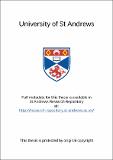Files in this item
Multifractal analysis and modelling of rainfall
Item metadata
| dc.contributor.advisor | Falconer, K. J. | en |
| dc.contributor.author | Lammering, Birger | en |
| dc.coverage.spatial | 116p | en |
| dc.date.accessioned | 2021-04-08T08:59:27Z | |
| dc.date.available | 2021-04-08T08:59:27Z | |
| dc.date.issued | 2000 | |
| dc.identifier.uri | https://hdl.handle.net/10023/21926 | |
| dc.description.abstract | In this thesis we study novel aspects of the multifractal properties of rainfall. Our aim is to use multifractal methods to improve the representation of rainfall distributions in climate simulations, in particular by disaggregating spatial rainfall using random cascades. For this we utilise recent mathematical ideas from multifractal analysis, develop computational methods based on these ideas and apply them to the central hydrological question of rainfall representation in climate simulations. First we present the background to fractal and multifractal theory, with an introduction to the fine, coarse and Legendre transform multifractal spectrum. We consider algorithms for computing the auxiliary function and the Legendre multifractal spectrum, which we test 011 some measures with well-known multifractal properties. We review the motivation for applying multifractal analysis, in particular random cascade measures, to hydrological problems. To provide a non-isotropic test example, we introduce and analyse a self-affine measure supported by a variant of the Sierpinski triangle. As a main application, we incorporate a random cascade disaggregation of spatial rain¬ fall into the hydrological component of the UK Meteorological Office Surface Exchange Scheme and compare the resulting water balance variables with those gained from simulations using more conventional rainfall distributions. We show that a disaggregation using random cascades gives closer values to the reference simulation than the other approaches. The multifractal properties of random cascades depend on the parameters used in their generation process. We present some simple schemes for estimating parameters that give random cascades with specific multifractal features. These schemes are applied to standard examples and spatial rainfall data. We question the assumption that random cascades are always appropriate for modelling observed multifractals. In the final chapter we discuss the relationship of the multifractal functions of a plane measure and those of slices of the measure by a line. Based on recent mathematical ideas about the multifractal properties of slices we formulate the 'slice hypothesis'. We investigate the use of the slice hypothesis to estimate multifractal properties of spatial rainfall fields from data from slices and from temporal data at a fixed site. | en |
| dc.language.iso | en | en |
| dc.publisher | University of St Andrews | en |
| dc.subject.lcc | QA614.86L2 | |
| dc.subject.lcsh | Differentiable dynamical systems | en |
| dc.subject.lcsh | Rain and rainfall--Mathematical models | en |
| dc.title | Multifractal analysis and modelling of rainfall | en |
| dc.type | Thesis | en |
| dc.type.qualificationlevel | Doctoral | en |
| dc.type.qualificationname | PhD Doctor of Philosopy | en |
| dc.publisher.institution | The University of St Andrews | en |
This item appears in the following Collection(s)
Items in the St Andrews Research Repository are protected by copyright, with all rights reserved, unless otherwise indicated.

